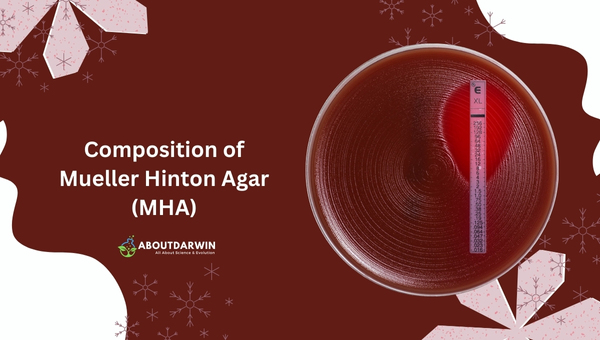Physical Address
304 North Cardinal St.
Dorchester Center, MA 02124
Have you ever wondered about the diverse world of microbiology and how researchers conduct tests for pathogens or antibiotic susceptibility? Then, this blog post is a must-read for you! It delves into all details related to Mueller Hinton Agar (MHA) – its composition, underlying principle, uses in various contexts, and preparation process.
When we talk about the Mueller Hinton Agar (MHA), we refer to a microbiological growth medium that plays an instrumental role in clinical microbiology.
It boasts an efficient composition primarily comprising beef extract, casein hydrolysate, starch, and agar, which makes it ideal for antimicrobial susceptibility testing. Simply put, MHA is your go-to component when you need to evaluate the effect of antibiotics on specific microorganisms.
Contents
When we talk about Mueller Hinton Agar (MHA), we actually delve into the unique blend of specific ingredients that work harmoniously together.

Each component plays a significant role in this medium, creating a perfect environment for bacterial culture growth. Let’s take a look at these key constituents.
What essentially composes the MHA? It’s intriguing to find out that these elements are straightforward and typically easy to source:
Each ingredient is critical in creating an environment conducive to microorganism growth. However, their individual roles are what make them truly special.
Let’s explore how each component contributes to making MHA an effective medium:
Each ingredient melds into an efficient mixture that serves as an ideal diagnostic tool in microbiology labs. Their collective roles render Mueller Hinton Agar indispensable when exploring bacterial antibiotic resistance or identifying pathogens.
Also Read: Identification and Biochemical Testing of Streptococcus pyogenes
Understanding the principles behind Mueller Hinton Agar (MHA) is essential to constructing a better understanding of its optimal use in various laboratory settings. Here, I delve into the foundation underlying this crucial substance and discuss how it works.
At its core, the principle underlying Mueller Hinton Agar is quite straightforward. This medium was first developed by John Howard Mueller and Jane Hinton, who were pioneering scientists seeking a reliable and standardized method to perform antibiotic sensitivity testing.
Simply put, MHA provides an ideal environment for bacteria to grow. It does so through a combination of a few key materials: beef extract, casein hydrolysate, starch, and agar. Together, these ingredients form a rich base that encourages bacterial growth while reducing background errors or interferences.
You might wonder why the medium seems so simple when compared with other media out there—well, this simplicity is actually by design! MHA’s composition makes it compatible with an array of antimicrobial substances, aiding in testing for antibiotic resistance, which is a critical issue within medical microbiology.
So, how does this all come together?
In practical terms? When bacteria are swabbed onto an MHA plate impregnated with specific antibiotics—their behavior under these conditions indicates their susceptibility or resistance to each drug. The inhibition of bacterial growth in the presence of antibiotics denotes sensitivity, while growth despite high antibiotic concentrations warns of potential resistance.
Also Read: Haemolysis in Streptococci: Types and Health Impact
Mueller Hinton Agar (MHA) boasts extensive uses in various sectors of microbiological work, primarily stemming from its preparation and composition, which are designed to cater efficiently to bacteria growth.
This medium’s ubiquitous usage manifests more evidently within the realms of clinical microbiology, as well as transcending beyond it to other scientific domains. Let us walk you through these pockets where MHA shines the brightest!
Often regarded as a workhorse within clinical microbiology labs, MHA finds itself integral to myriad critical tasks:
Stepping out from solely clinical settings, hate wearing a stethoscope? No worries! The applications of MHA extend beyond microbiology into other engaging sectors:
This versatility presented by MHA is why you’ll likely find a stash of pre-poured plates or bucket loads of powdered MHA, ready for preparation, in most working microbiology laboratories worldwide!
Also Read: Haemolysis in Streptococci: Types and Health Impact
Preparing a high-quality batch of Mueller Hinton Agar (MHA) requires not only a solid understanding of the composition but also an appreciation for detail and accuracy in each step involved. Let’s walk through this process together.

The preparation steps are straightforward, but they demand meticulous attention to get right. Here’s a guide for you:
As you can see from the steps listed above, preparing MHA requires both precision and patience to ensure a contamination-free agar medium that supports reliable testing results.
In any laboratory setting—and especially when preparing culture media like MHA—it’s crucial that safety guidelines are followed diligently at all times:
By keeping these safety measures in mind and following the step-by-step guide above, anyone should be able to prepare Mueller Hinton Agar plates with relative ease and confidence. And just remember: practice makes perfect! Be patient meticulous, and always prioritize safety.
In the end, having prepared Mueller Hinton Agar (MHA), samples will prove incredibly useful for various laboratory applications—and you’ll have had a productive day at the lab putting them together.
Also Read: A Close Look at Mold and Yeast: Deciphering the Differences
Mueller Hinton Agar’s distinctive feature is its optimal combination of starch and beef extract, giving it an ideal consistency and nutrient profile for bacterial growth and antibiotic susceptibility testing.
MHA is crucial in clinical microbiology labs, where it identifies pathogens through cultivating bacteria and fungi and performs antibiotic susceptibility tests.
Common errors made during MHA preparation include inaccurate measurement of ingredients, which can affect the agar’s pH or nutrient content; overheating the mixture, causing it to degrade; or improper sterilization, which may lead to contamination.
If you think your agar medium might be contaminated, immediately discard it following lab safety protocols. Clean your workspace thoroughly before preparing a new batch to prevent cross-contamination.
The correct pH ensures optimal conditions for microbial growth – any fluctuations could change how antibiotics interact with microbes during susceptibility testing.
Also Read: Distinguishing between Anthrax Bacilli and Anthracoid Bacilli
In conclusion, Mueller Hinton Agar (MHA) plays a significant role in clinical microbiology and beyond. From its unique composition comprising beef infusion solids, casein acid hydrolysate, starch, and agar to its practical use in versatility and reliability in laboratory testing – MHA proves itself invaluable.
It’s also worth noting the precise care needed during preparation to prevent contamination or inaccuracies in test results. With proper understanding and application, MHA proves to be an essential tool in any laboratory setting.